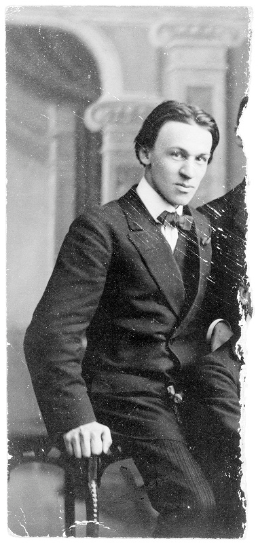
Frédéric Sauser is born in La Chaux-de-Fonds in 1887. After a troubled childhood he is sent to Russia to complete an apprenticeship. Once back in Switzerland he enrols at the University of Bern to study medicine; there he meets his first wife Féla Poznanska. In 1911 he is in New York, editing Les Pâques. He then moves to Paris and publishes the text under a pseudonym which becomes permanent: Blaise Cendrars. He spends his time associating with avant-garde painters and circles. In 1913 he publishes his most famous poem: La Prose du Transsibérien et de la petite Jehanne de France. During the First World War he volunteers to serve with the French army; he is seriously wounded in 1915 and his right arm is amputated.
Back in civilian life, Cendrars turns to cinema and publishing. In 1917 he meets the woman who will become his muse: Raymone Duchâteau. The 1920s see the publication of his last collections of poems and the production of a significant body of novels. He also travels to Brazil. In the decade that follows, he is mainly involved in reportage.
When the Second World War breaks out, Cendrars signs up to be a war correspondent with the British army and later moves to Aix-en-Provence. In 1943 he begins editing his “memoirs that aren’t memoirs” – L’Homme foudroyé, La Main coupée, Bourlinguer and Le Lotissement du ciel – in which he presents a transfigured version of his own past. In 1950 Cendrars settles in Paris for good, and publishes his last novel, Emmène-moi au bout du monde…, in 1956. He dies in 1961, having received the Grand Prix de la Ville de Paris.
Last modification 21.06.2022
Contact
Swiss National Library
Swiss Literary Archives
Vincent
Yersin
Hallwylstrasse 15
3003
Bern
Switzerland
Phone
+41 58 46 26306
Swiss National Library
Swiss Literary Archives
Fabien
Dubosson
Hallwylstrasse 15
3003
Bern
Switzerland
Phone
+41 58 462 87 10





